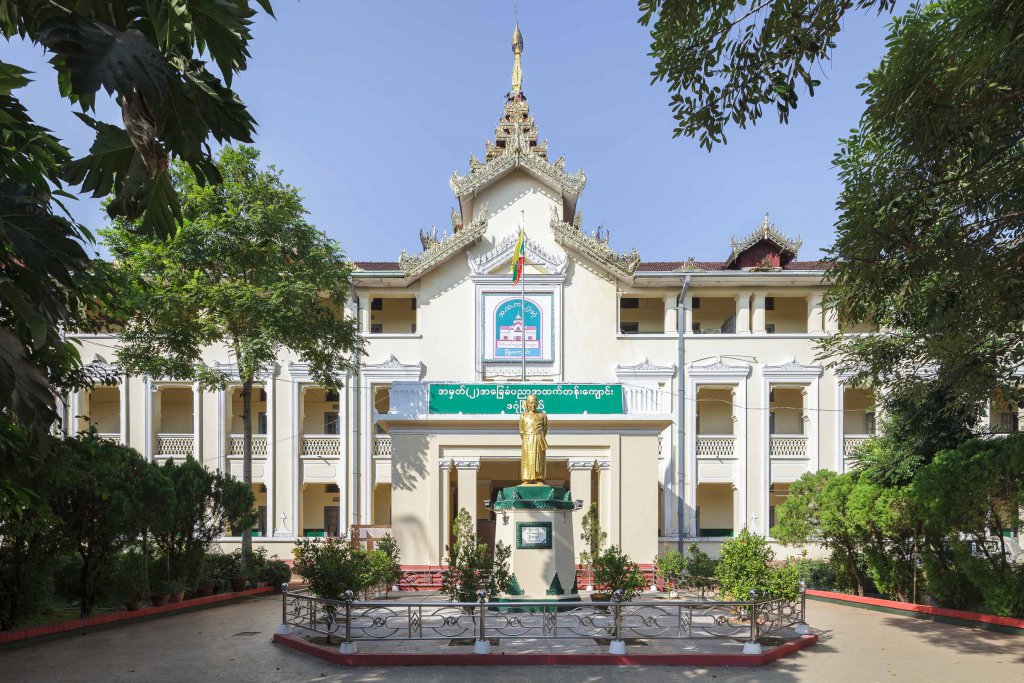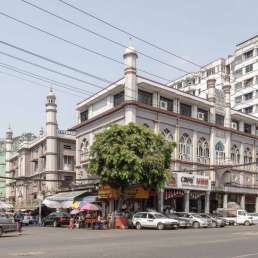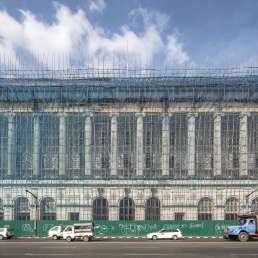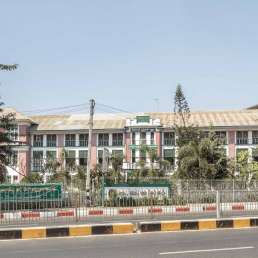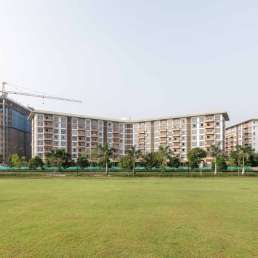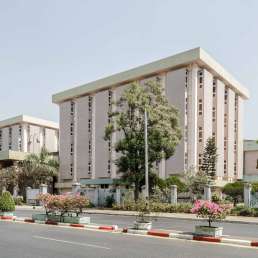Formerly: Myoma National High School
Address: 353 Myoma Kyaung Street
Year built: 1929-1931
Architect: U Tin
Today’s Basic Education High School No. 2 was once the Myoma National High School. It holds a special place in the story of Burma’s quest for independence. When the Universities Act was passed in 1920, it foresaw that Rangoon College was to become a higher education institution—now the totemic Yangon University. But it was prohibitively expensive for most Burmese. Students in the nationalist movement staged a boycott which went down in history as one of the first acts of defiance against the colonial regime. In the wake of these protests, nationalists created a parallel schooling system with a heavy emphasis on Burmese language, culture and history. Most of these schools folded under great financial difficulty. Myoma National High School, however, survived the 1920s. By 1922, the school was nothing more than a few makeshift wooden structures in today’s Bahan township. The main building was described by those studying and teaching in the school back then as “one big hut”. The school moved twice before reaching its current location.
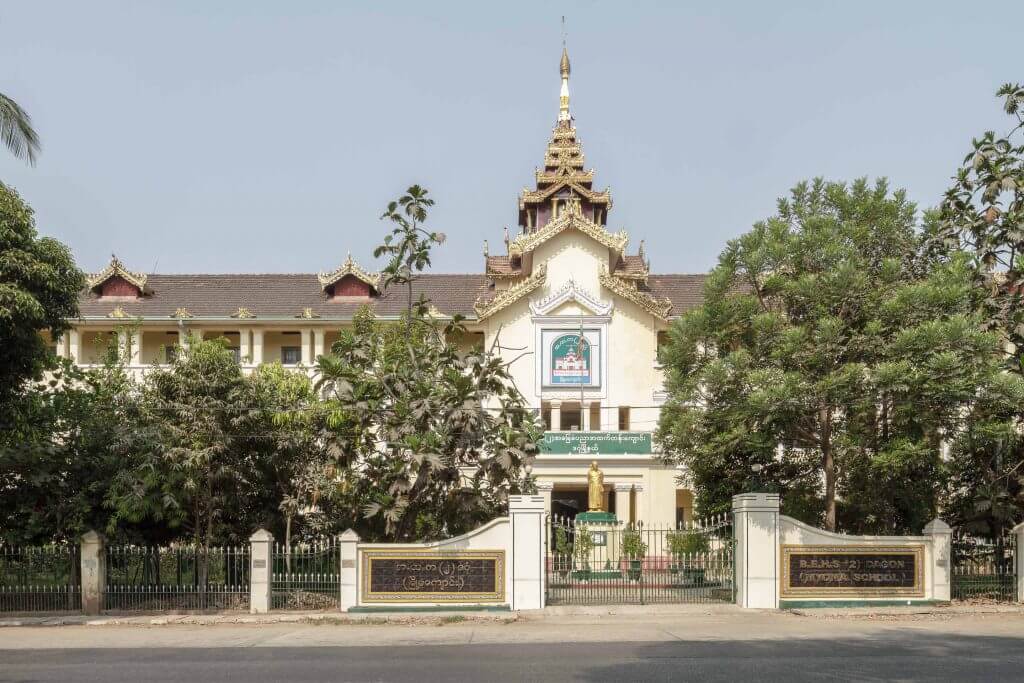
The cornerstone for a more permanent building was laid on 25 November 1929, the ninth anniversary of the University Boycott. The day continues to be celebrated as National Day. In a deliberate break with British colonial tradition, the building was designed by a Burmese architect, U Tin, whose signature style married classical elements of Burmese temple architecture with European forms and building techniques. His approach is visible at the City Hall, built around the same time. At Myoma, Burmese features include a five-tiered pyatthat roof above the main entrance. Its carvings are echoed in the dormers.
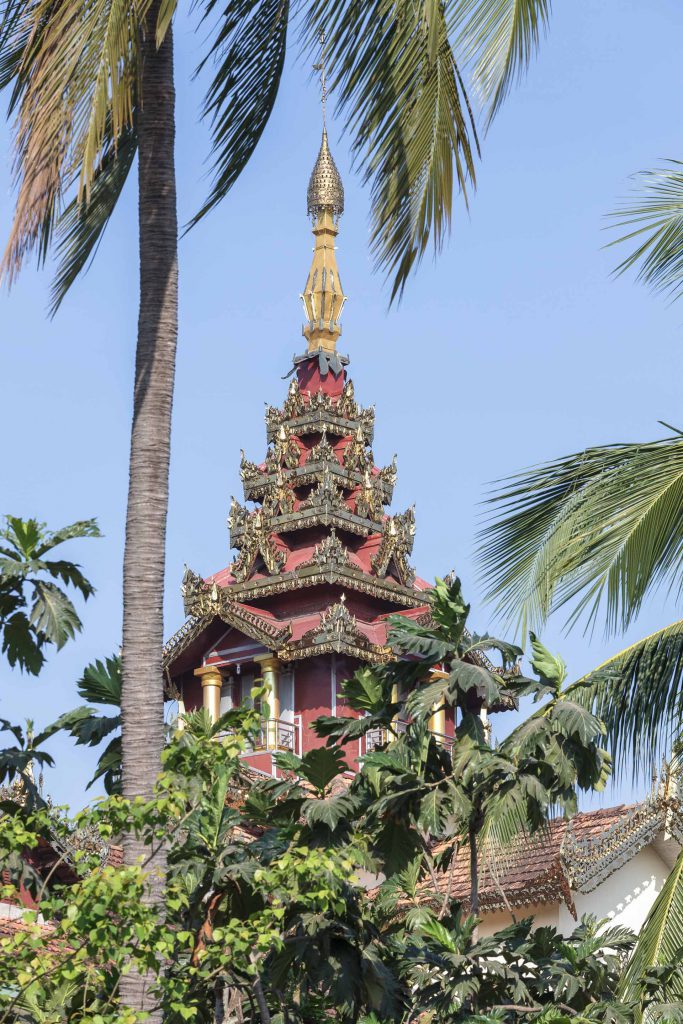
Fittingly, the ceremonial opening of the school occurred on National Day 1931—falling on 4 December that year, according to the Burmese calendar. A statue of the school’s headmaster, Ba Lwin (1892–1968), still greets visitors at the entrance. His celebrated dedication to the school’s cause and donations from parents ensured the institution’s survival. Ba Lwin remained an important figure in Burmese education. After independence, he became ambassador to Sri Lanka. The school was nationalised in 1965 and given its typically generic current name. It remains a prestigious school offering kindergarten up to tenth-grade education to more than 4,000 students.
